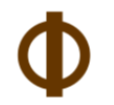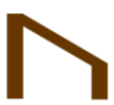Runes conjure images of Vikings and elves from Tolkien books. Though these symbols appear simple enough at first glance, their powerful magic cannot be underestimated.
Early History
Although theories exist regarding the origins of runes, it’s clear they weren’t rooted in any particular language. Instead, runic symbols represented sounds rather than words and therefore cannot be translated. Additionally, runic characters differed from Latin alphabet letters in that one symbol could represent multiple sounds or whole words at the same time. They are unlike letters written left-to-right, but rather written horizontally or vertically and strung together like hieroglyphs.
There were three primary varieties of runic script: Early or Common Germanic; Anglo-Saxon (used in England from about 800 AD to the 12th century); and Nordic, used by Scandinavia and Iceland until that period; sometimes called futhark.
Early Germanic alphabet contained 24 letters divided into three aettir of 8 letters each, starting with feoh – representing the sound ‘f’ in English; its equivalents in Anglo-Saxon were th and in Viking Age English were thorn. C, Cen and G were used to represent sounds similar to Latin letter E; while YH and WYH completed its composition.
Scholars have suggested that the futhark script may have been an early form of the Greek alphabet. Others believe it evolved from Semitic languages prevalent in its region. A study of its angular shapes disproves these claims. Furthermore, any horizontal strokes would reduce legibility and increase the likelihood of splitting timber when carving into wood messages.
Runic names were frequently linked with deities and spirits, believing them to have magical properties and being used by Anglo-Saxons for spell casting. The word “spell” derives from Anglo-Saxon word writan which comes from root ruuan which means “secret”. This likely stemmed from belief that writing out or reading runes correctly could provide or remove magical abilities from people.

Purpose
Runes were originally used for divination, or seeking knowledge about the future or unknown through supernatural means, during ancient Scandinavia. Divination involved casting rune stones and reading their symbols like reading tarot cards.
Runes can serve as oracles for guidance through difficult times and shed insight into situations. Many psychics combine casting runes with intuitive reading to gain more specific answers regarding what is going on in life.
Runes are ancient Scandinavian letters carved into pieces of wood, stone or pebbles that can be found on historical amulets and jewelry items. Runes were often carried around in bags or pouches so they could be used at any moment for divination or protection against evil spirits. They are known for their powers of invocation as they contain energy from Viking spirits.
Common runes can be found on monuments (runestones) commemorating those who have died or performed great deeds. These are usually in the form of Norse poems which can be quite emotional to read. This field is called runology and there are now many specialists dedicated to studying and conserving such inscriptions.
Runes typically lack meaning by themselves. Their significance lies within the entirety of an inscription made up of vertical lines and branches or twigs, extending either upwards, downwards, or in any curve from them. When studying runology it’s also necessary to consider both its layout as well as any factors which might alter interpretation.
The Ansuz rune symbolizes communication and spiritual growth. Associated with advice and guidance, its reversed appearance indicates caution about what you believe or are told. On the contrary, an upright rune suggests you are on the right path and should continue in that vein.
Meaning
Runes can be an incredible tool to use to enrich life and tap into one’s inner wisdom. However, as with any divination tool it takes some practice to become proficient at rune reading. There are guides and books available that provide a path toward learning their symbols’ meanings, and it is best to work in an environment of tranquility when doing so. A few examples are provided in the next few paragraphs.
Fehu is the first rune in the Elder Futhark and symbolizes wealth, abundance and good luck for the near future. If this rune is reversed it could mean financial loss, or difficulty maintaining positive attitudes.
Ansuz is connected with Odin and ancestral gods and represents communication. This rune serves as a reminder to pay close attention to what you hear, especially advice offered freely from others or received as signs from the universe. Furthermore, Ansuz may symbolize spiritual growth or holy knowledge. When reversed it may indicate possible deceitful intentions.
If the rune Isa is pulled, it signifies progress toward your goals and can also signify hard work that has led to success. But remember, success brings both opportunities and challenges, so reversed Isa could mean unexpected setbacks or delays.
Thurisaz represents Thor’s hammer and fire. It can serve as a reminder to remain open-minded, let go of old ideas, and move forward. When reversed, it could indicate emotional blockages that need to be broken down.
When the rune Algiz is drawn, it symbolizes an eagle’s flight and freedom from entanglement. It could be an indicator that you are on the verge of making personal progress, but be careful to remain focused. You might become overexcited. It’s best to take it slowly.

Reversals
Reversing a rune can have multiple interpretations. Most commonly, reading it backwards indicates the need to pay closer attention to feelings and follow your intuition more closely.
Pulling the rune Othala in reverse can signify that there is conflict within your family, which needs to be resolved to avoid negative energy and avoid conflict. On the other hand, this rune may signify that healing needs to take place both internally and between relationships. Now is the time for being patient with yourself and others!
Thurisaz rune is often drawn in reverse when someone is experiencing health problems, to remind themselves to trust both themselves and their universe for answers and healing. Additionally, this rune serves as a reminder to be grateful for what they already possess.
Raidho is an auspicious rune, symbolizing new opportunities and friendships. If it is pulled in reverse, it can mean that hard work must be put forth to overcome challenges. It could also signal that someone is going through tough times and needs your assistance.
Kenaz is an influential rune that symbolizes illumination and growth. When pulled backwards, this rune may suggest you need to banish any darkness from your life. Alternatively, it could warn against getting too close to those who could potentially be harmful or toxic to it.
Runes do not predict the future, but can provide guidance for your life. They can also help you understand yourself better as well as understanding change and transformation better. When using runes it’s essential that your conscious and unconscious minds remain aligned so you can benefit fully from their wisdom.

Modern Day Rune Practices
The modern day rune practices have evolved to suit the needs and preferences of contemporary practitioners. While the traditional methods involved carving runes onto stones or wood, modern practitioners have adapted to the digital age by using rune apps or online resources. These technological advancements have made rune practices accessible to a wider audience, allowing individuals from all walks of life to explore and benefit from this ancient wisdom.
One of the key aspects of current rune practices is the use of runes as a tool for self-reflection and personal growth. Each rune carries a specific energy and meaning, representing different aspects of life and human experience. By drawing a rune or casting them as a spread, individuals can gain insights into their current situations, find guidance for decision-making, or even uncover hidden aspects of their subconscious mind.
Another significant aspect of rune practices is the integration of runes into various spiritual and holistic practices. Many individuals incorporate runes into meditation, yoga, or energy healing sessions to enhance their spiritual connection and deepen their understanding of the self. Runes can also be used in spellwork or ritual ceremonies, allowing practitioners to tap into the ancient wisdom and harness the power of these symbols.
Furthermore, modern day rune use emphasize the importance of studying and understanding the historical and cultural context of runes. While they may appear as simple symbols, each rune holds a rich history and carries layers of meaning. By delving into the Norse mythology and ancient practices associated with runes, practitioners gain a deeper appreciation for the wisdom and power these symbols hold.
It is worth noting that rune practices are not limited to a specific belief system or spiritual path. Runes have become a tool for personal exploration and growth, transcending religious and cultural boundaries. They offer a universal language that speaks to the human experience, allowing individuals to tap into their innate wisdom and intuition.
However, some belief system practitioners prefer not to integrate different elements, for example, runes and zen practices. While there are no set rules, cultural norms should be considered and respected in certain countries or continents.
Content listed below may include affiliate links.
